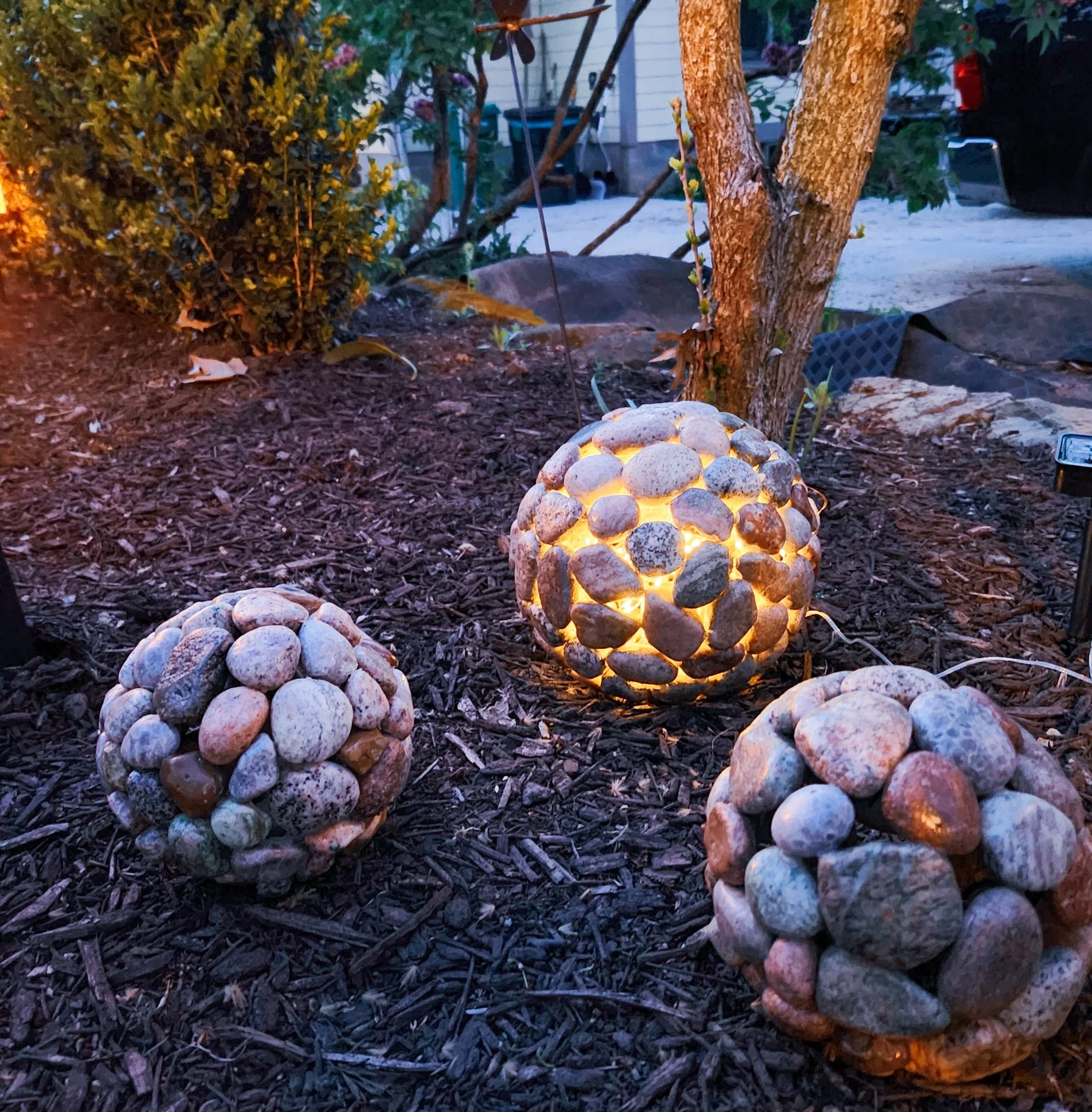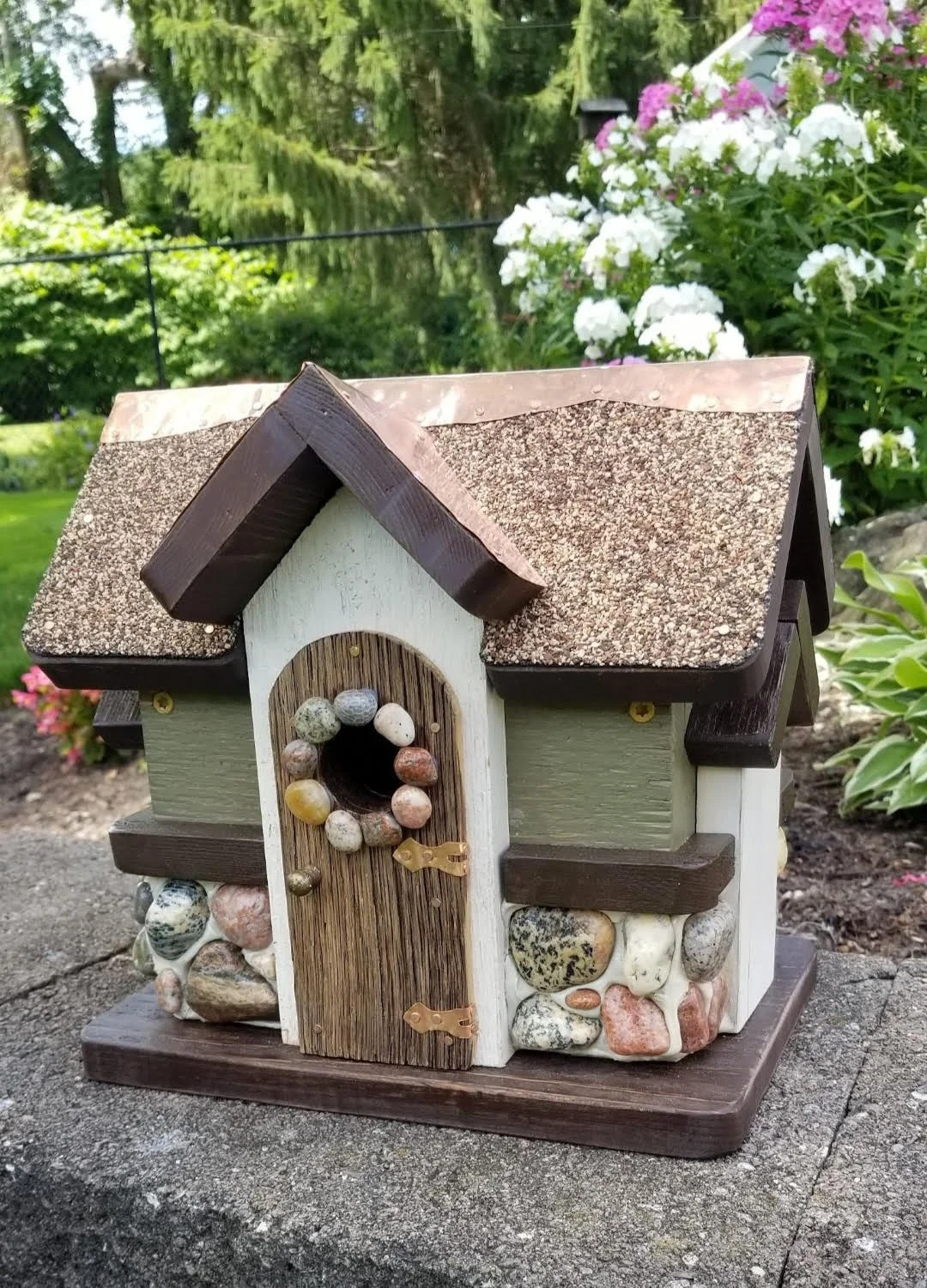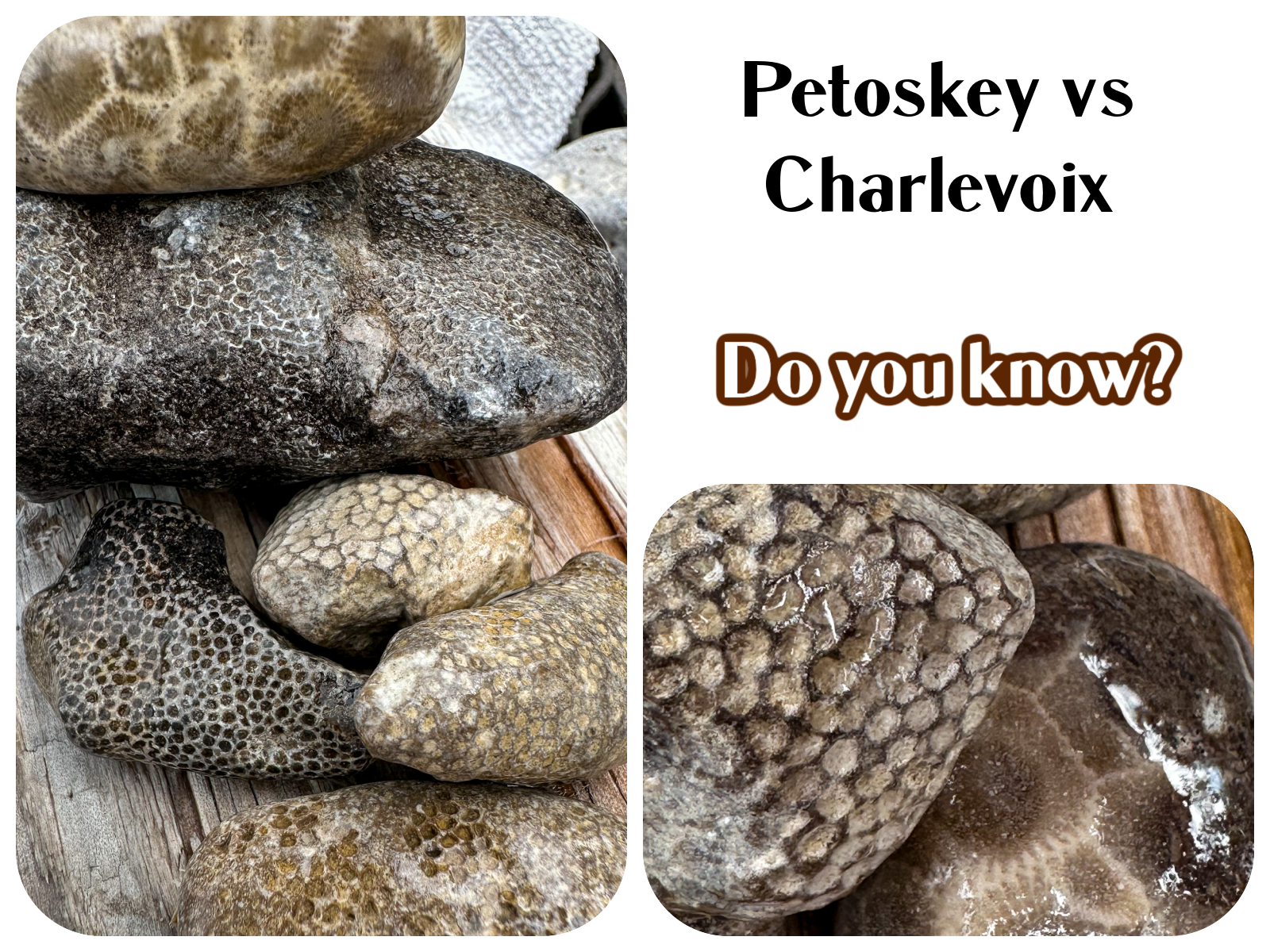The Art of Michigan Rocks: Sandy Hogan’s Decorative Creations
“What can I do with all these rocks?”
It’s a question that all-too-frequently occupies the minds of many rockhounds here in Michigan. Agreed, many rock lovers are perfectly content to leave their finds au naturale — in the “raw” state in which they were found. But its hard to imagine a rockhound that has not had at least a passing desire to make something out of some of their collected treasures. The question is, what?
Sandy has some ideas …
Rock Artist and Beach Lover
Sandy Hogan of Rochester, NY, spends much of her summers in Charlevoix, MI. A short walk from her front door puts her in the perfect spot (Michigan Beach) for collecting her favored medium. Petoskeys are her favorite but the beaches in this area never fail to reveal colorful inspiration of all varieties. Other popular pics include unakite, granite, quartz, chalcedony, and Charlevoix stones.
Courtesy photo
Coming Home
Although technically a New Yorker, Hogan’s heart is grounded in Michigan beach rocks. Thanks to her grandparents, her summers (and pockets) have been filled with Lake Michigan treasures for almost as long as she can remember.
“That house has always felt like home,” she said. “It holds such wonderful memories.”
Her grandparents purchased a summer cottage in downtown Charlevoix in 1915. (It was built in 1880.) From the very beginning, the house became the cornerstone of many summer memories. Hogan and her siblings continue to spend as much of their summers there as possible. For Sandy, it is the place that calls her “home” year after year.
“I remember sitting on the front porch, polishing my first ever Petoskey stone. I was in third grade. I still have that stone. ”
Petoskey stones and Charlevoix stones (both shown here) are fossils. They both display a hexagonal pattern. But there are some key differences. The University of Michigan’s Museum of Paleontology’s Online Repository of Fossils is an excellent resource for information on the many different kinds of fossils you can find in Michigan. You can also visit various online forums for help in identify your finds. For Michigan rocks, check out the Michigan Rockhounds website and Facebook group.
Hogan’s Creations
When it comes to what type of rock will go in which Hogan-creation, it sort of depends on what she is making. But to be honest, the chance of at least one Petoskey stone is high.
Hogan is both a decorator and a naturally creative person. The list of things Hogan has created with her Michigan beach rocks is impressive.
Solar lanterns
Mushroom garden statues
“Rock Ball” Lights - BASIC INSTRUCTIONS at end
Wind chimes
Signs
Painted rocks
Birdhouses
Tabletops
Selling Her Work
While she keeps, uses and displays most of what she makes, she also sells some things. At first, it was to friends etc. but she started going to a regular garden show and whatever she brought with her was quickly snatched up. Being retired, she has no desire to work. But as making things out of rocks is what she considers great fun, she has been pretty busy.
One of her most popular creations is her mushrooms, typical used as garden decorations. Lately, she’s been adding some extras (brightly painted lady bugs, etc.), and she is working hard to keep up with demand.
She’s also been busy setting up an Etsy shop. She’s also on Instagram @sandylandcreation and Facebook at SandyLandCreation.
Michigan Beach, Charlevoix
This beach in downtown Charlevoix is where Hogan finds many of the stones she uses in her creations. Some of the classic Michigan beauties that can spotted here include Petoskey stones, Charlevoix stones, other Devonian coral fossils, quartz, granite, chalcedony, chert, epidote, and even the occasional agate.
Charlevoix and the surrounding area is a popular destination for rockhounds - as there are a number of good beaches in relatively close proximity of each other. See this online Michigan Rockhounding map for details.
Photo by Carla Antico
Sandy Hogan’s Rock Ball Recipe
Rock Balls
As a member of several Facebook groups focused on rockhounding in Michigan, Sandy is able to show off some of her creations to other rock fans. These lighted balls, composed of a variety of Michigan beach stones, drew a big response from the Michigan Rockhounds group. “How did you do that? I want to do that!” were common comments.
Sandy was willing to share her recipe for these delightful lights.
Making Rock Balls
Make the circle. Hogan uses a half-circle “form” she found on Amazon, but any bowl-shaped form that you can cover in stretch wrap should do. Wrap the half circle in stretch wrap.
Gather some right-shaped rocks. They should be smooth and be able to have at least three contact points with each other. Don’t use polished rocks. You add the shine at the end.
Assemble and Glue. Arrange your selected rocks, one-by-one, so that each touches another at at least three different spots. Glue them together at those points. Sandy uses Gorilla Glue gel, but other adhesives should would as long as it can be used on stone. Use small pebbles to fill any gaps. You need to make two of these.
Make a Hole (if making a light). Leave a circle, a “hole” on one of the halves. It will need to be big enough to get over your light source.
Let them dry. Give them at least 24 hours. The more, the better.
Assemble. Once everything is dry and set, gently pull the half circles apart. Then carefully line each side up and glue them together — creating the final ball shape.
The ball came be lit from the inside in a variety of ways, depending on whether the ball will go inside or outside. Inside, you can use fairy lights, an electric candle, etc. For outside lighting, there are various options including solar lights. You can make the balls virtually any size as long as you have the right-size form. Hogan’s balls are 7.5” in diameter.














